Logistics
324 products.
Filter by business area
[Close]
34 products.
[Close all]
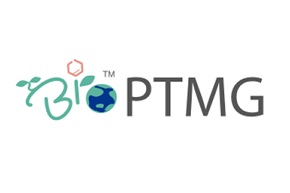
BioPTMG is a polyether polyol manufactured from plant-derived raw materials.
BioPTMG has the same performance as petroleum-derived PTMG as a raw material for polyurethane and polyester resins and has excellent impact, wear and hydrolysis resistance, flexibility at low temperatures, etc. Taking advantage of these characteristics, it can be used in a wide range of fields, from interior and fashion to industrial materials.
- Grades:
- BioPTMG650、BioPTMG1000、BioPTMG2000、BioPTMG3000
- Japan, Chemical Substances Control Law:
- (7)-129
- Japan, Poisonous and Deleterious Substances Control Law:
- Not applicable.
- Japan, Fire Services Law:
- Hazardous Material Class 4 Petroleums No.4 Hazardous Rank III(BioPTMG650)
Combustible Materials, Flammable Solids(BioPTMG1000, 2000, 3000)
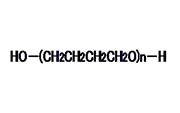
PTMG (Poly(tetramethylene ether)glycol / PTMG) is a linear polyether glycol with hydroxyl groups on both ends. As a polyol, it reacts readily with isocyanates (for example MDI, TDI), etc. to make resins with excellent properties.
- Grades:
- PTMG250、PTMG650、PTMG850、PTMG1000、PTMG1300、PTMG1500、PTMG1800、PTMG2000、PTMG3000、PTMG3200(developed grade in mass production)
- Japan, Chemical Substances Control Law:
- METI-No. 7-129
- Japan, Poisonous and Deleterious Substances Control Law:
- Not applicable.
- Japan, Fire Services Law:
- Hazardous Material Class 4 Petroleums No.3 Hazardous Rank III (PTMG250)
Hazardous Material Class 4 Petroleums No.4 Hazardous Rank III (PTMG650,850)
Combustible Materials, Flammable Solids (PTMG1000, 1300, 1500, 1800, 2000, 3000, 3200(developed grade in mass production))
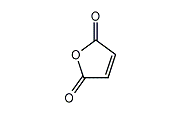
Maleic anhydride is produced by oxidation of benzene or a C4 hydrocarbon such as butane in the presence of a vanadium oxide catalyst. Maleic anhydride can be converted to maleic acid by hydrolysis and to esters by alcoholysis.
- EINECS: No. 203-571-6
- Japan, Chemical Substances Control Law: METI-No. 2-1101
- Japan, Industrial Safety and Health Law: Dangerous Goods and Toxic Substances Whose Names Should be Labeled and be Notified Appended Table 2-1978
- Japan, Poisonous and Deleterious Substances Control Law: Not applicable.
- Japan, Fire Services Law: Not applicable.
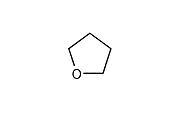
THF (Tetrahydrofuran) is a stable compound with relatively low boiling point and excellent solvency. It is widely-used for dissolution and reaction of various substances. Also it is used as a starting material for the synthesis of poly(tetramethylene ether) glycol (PTMG), etc. Since 1982, Mitsubishi Chemical's Tokai plant has produced high-purity, high-quality THF from butadiene using our proprietary technology.
- EINECS: No. 203-726-8
- Japan, Chemical Substances Control Law: METI-No. 5-53
- Japan, Industrial Safety and Health Law: No. 5-53
- Japan, Industrial Safety and Health Law: Dangerous Goods and Toxic Substances Whose Names Should be Labeled and be Notified Appended Table 2-1278
- Japan, Poisonous and Deleterious Substances Control Law: Not applicable.
- Japan, Fire Services Law: Hazardous Material Class 4 Petroleums No.1 (water-soluble liquid). Hazardous Rank II
- U.N. Class: 3
- U.N. No.: UN2056
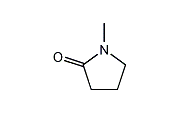
NMP (N-Methyl-2-Pyrrolidone) is a polar solvent with outstanding characteristics. It has a wide range of applications because it offers very high solvency, high boiling point, low freezing point, and ease of handling.
- EINECS: No. 212-828-1
- Japan Chemical Substances Control Law: METI-No. 5-113
- Japan, Industrial Safety and Health Law: No. 8-1-1014
- Japan, Industrial Safety and Health Law: Dangerous Goods and Toxic Substances Whose Names Should be Labeled and be Notified Appended Table 2-2108
- Japan, Poisonous and Deleterious Substances Control Law: Not applicable.
- Japan, Fire Services Law: Hazardous material Class 4 Petroleums No.3 (water-soluble liquid).
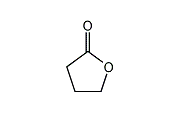
GBL has a wide range of practical applications because of its low freezing point, high boiling point, and a unique combination of solvent and electrical properties. It has applications as a solvent for special resins, in photography, in batteries, and as an electrolyte. Also a number of derivatives are synthesized from GBL.
- EINECS: No. 202-509-5
- Japan Chemical Substances Control Law: METI-No. 5-3337
- Japan, Industrial Safety and Health Law: No. 5-3337
- Japan, Industrial Safety and Health Law: Dangerous Goods and Toxic Substances Whose Names Should be Labeled and be Notified Appended Table 2-412
- Japan, Poisonous and Deleterious Substances Control Law: Not applicable.
- Japan, Fire Services Law: Hazardous material Class 4 Petroleums No.3 (water-soluble liquid).Aprotic, polar solvent.
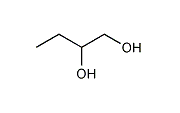
12BG (1,2-butanediol) is a branched glycol that has a primary hydroxyl group and a secondary hydroxyl group on adjacent carbon atoms. Mitsubishi Chemical Corporation offers two grades of purity. Both can be reacted with a dicarboxylic acid (e.g., phthalic acid or adipic acid) for use as a polyester polyol or a plasticizer, or reacted with an unsaturated dicarboxylic acid (e.g., maleic anhydride) for use as a raw material for unsaturated polyester resin. The high-purity grade 12BG is suitable for use as a solvent for inks and as a raw material for surfactants.
- EINECS: No. 209-527-2
- Chemical Substance Control Law (CSCL): METI-No. 2-235
- Japan, Industrial Safety and Health Act (ISHA): No. 2-235
- Japan, Poisonous and Deleterious Substances Control Act: Not applicable.
- Japan, Fire Service Act:Hazardous Materials, Category IV—Class III petroleums (water soluble liquids)
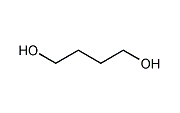
14BG (1,4-Butanediol) is a straight chain glycol with hydroxyl groups on both ends. It is used as a raw material for high performance polyester and polyurethane resins as well as for industrial chemicals like tetrahydrofuran and gamma-butyrolactone. Since 1982, Mitsubishi Chemical's Tokai plant has produced high-purity, high-quality 14BG from butadiene using our proprietary technology.
- EINECS: No. 203-786-5
- Japan, Chemical Substances Control Law: METI-No. 2-235
- Japan, Industrial Safety and Health Law: No. 2-235
- Japan, Poisonous and Deleterious Substances Control Law: Not applicable.
- Japan, Fire Services Law: Hazardous material Class 4 Petroleums No.3 (water-soluble liquid).
Polycarbonatediol, BENEBiOL™
[Close]
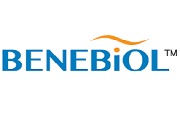
Polycarbonatediol(PCD) is a linear polycarbonate with hydroxyl groups at both ends. It easily reacts with isocyanate compounds(e.g. MDI, TDI, IPDI, H12MDI), and generates polymers with characteristics such as durability and chemical/hydrolysis resistance. BENEBiOL™ is the biomass-based PCD developed by our proprietary manufacturing technology. Because of “key monomer“ of each grade, polyurethane resins based on BENEBiOL™ will show an outstanding property level with regard to flexibility and chemical/stain resistance for example, in addition to the characteristics of conventional PCD. Besides, your product will be equipped with unique touch and feeling.Biomass-based polycarbonatediol with superior characteristics
Characteristics of polyurethane resins based on BENEBiOL™
non-edible raw material is used for some grades
transparency, stain resistance, chemical resistance, durability, toughness, weather resistance
flexibility, soft feel and touch, high hardness, good fit
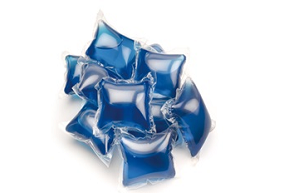
Water-soluble films developed by a specialist in chemical materials
HI-SELON™ is a water-soluble film made from polyvinyl alcohol.
With its excellent heat-sealing property and printability, HI-SELON™ is ideal for use as a packaging materials, but it also provides many other advantages, including high solvent resistance and barrier performance, which are used as materials for packaging of liquid detergent capsules.
Soaresin™
[Close]
Soaresin™ is used as a stabilizer or purging agent for extrusion.
Synthetic Paper , YUPO™
[Close]

"YUPO" is a synthetic paper made from polypropylene resin as its primary material. It offers extraordinary beauty, strength and flexibility. YUPO combines the advantages of both paper and plastic film, and thanks to its unique qualities, it is used widely in several fields, including the commercial printing, packaging and communication paper.
Global Network
[Close]
Mitsubishi Chemical Logistics Corporation can provide the logistics service of the highest standards and quality, based on the results and experience of many years used mainly chemicals.We also can undertake business agency of trade in general, such as advice of trade transactions and paperwork.
We can provide the logistics services of the highest standards and quality, based on the results and experience of many years used mainly chemicals.
In addition, we have a large number of staffs who are familiar with the various logistics services to a wide variety of items not only chemicals and dangerous goods but also auto parts, building materials, food and consumer goods, we will closely meet your needs.
Please contact our person in charge willingly available, such as logistics cost reduction, all consultation,etc.
Oceangoing - Overseas Division
[Close]
The Overseas Division as a part of the Marine Business Department in MCLC was established in 2000 in order to globalize our marine transportation business.
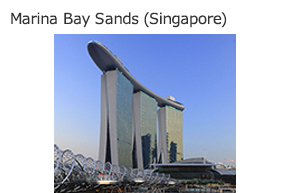
ALPOLIC is Aluminum Composite Material (ACM) composed of two sheets of aluminum and the thermoplastic core.
ALPOLIC has been global leading ACM since 1970s and has been used worldwide in more than 130 countries.
We have a variety of product lineups with design and function using different types of materials on surface and core materials
including ALPOLIC A1 which passed European fire classification A1 as the first ACM in the world, ALPOLIC/fr series which passed fire regulations around the world, and ALPOLIC/fr SCM with stainless steel on its surface.
For the details of products, visit ALPOLIC dedicated website.
- Product Finder
-
